Innovation, expertise, leadership:
Celebrating the 20th anniversary of DxO Labs
DxO's fascinating story is marked by a series of major technological innovations that have established us as pioneers of the consumer imaging industry. Discover some of the highlights – among many others – from across our twenty-year history!
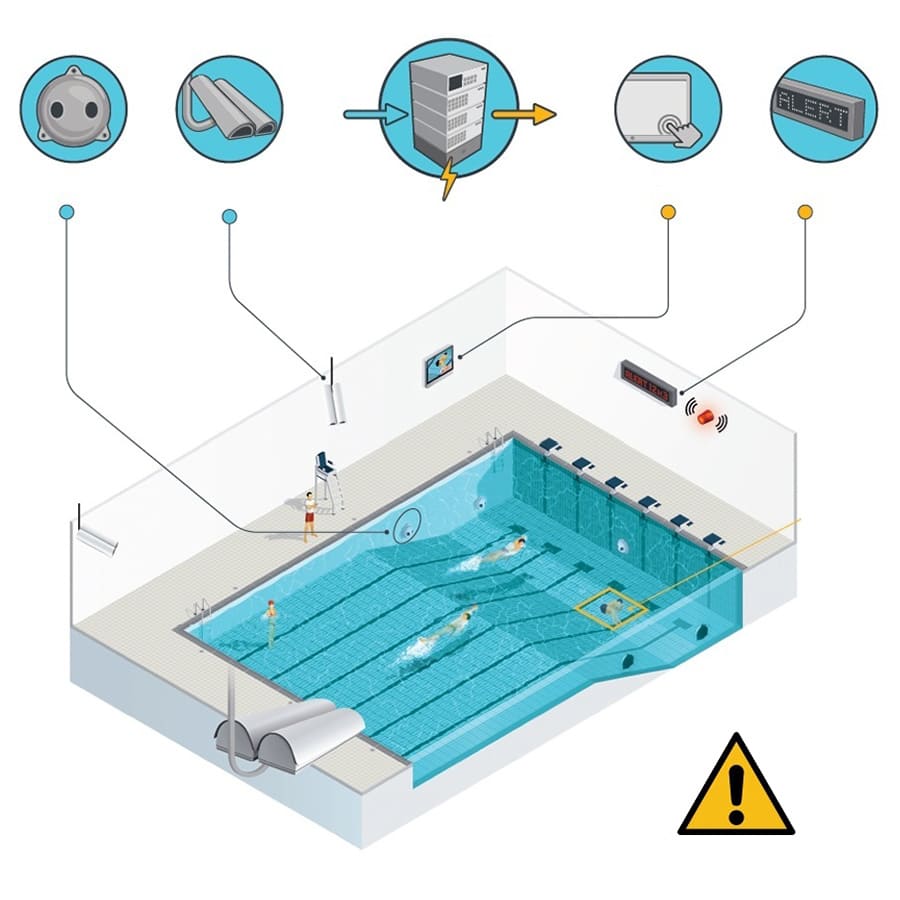
1995
Introducing Vision-IQ, DxO’s predecessor
The story of DxO Labs began in Paris in January 1995 with the founding of Vision-IQ. This technology start-up aimed to 'teach computers to see' in order to assist lifeguards in preventing drowning accidents in large swimming pools. The computer-aided surveillance system “Poseidon” is now used in over 300 pools worldwide and is credited with saving more than 50 lives.
2003
From Vision IQ to the inception of DxO Labs
The dual fish-eye lenses in the special underwater cameras used by Poseidon required Vision-IQ to develop technologies to correct complex lens flaws. Building on this success, we decided to form a new company that would apply these technologies to the emerging digital photography market. DO Labs — standing for "Digital Optics" and shortly after renamed DxO Labs — was born.
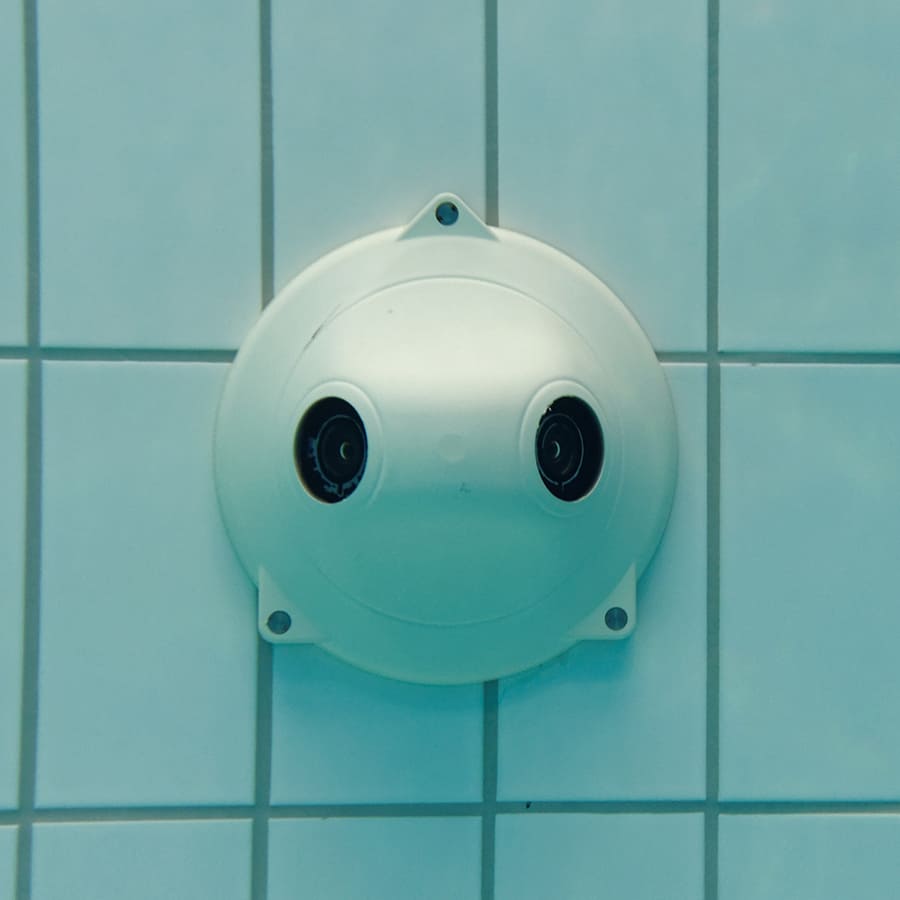
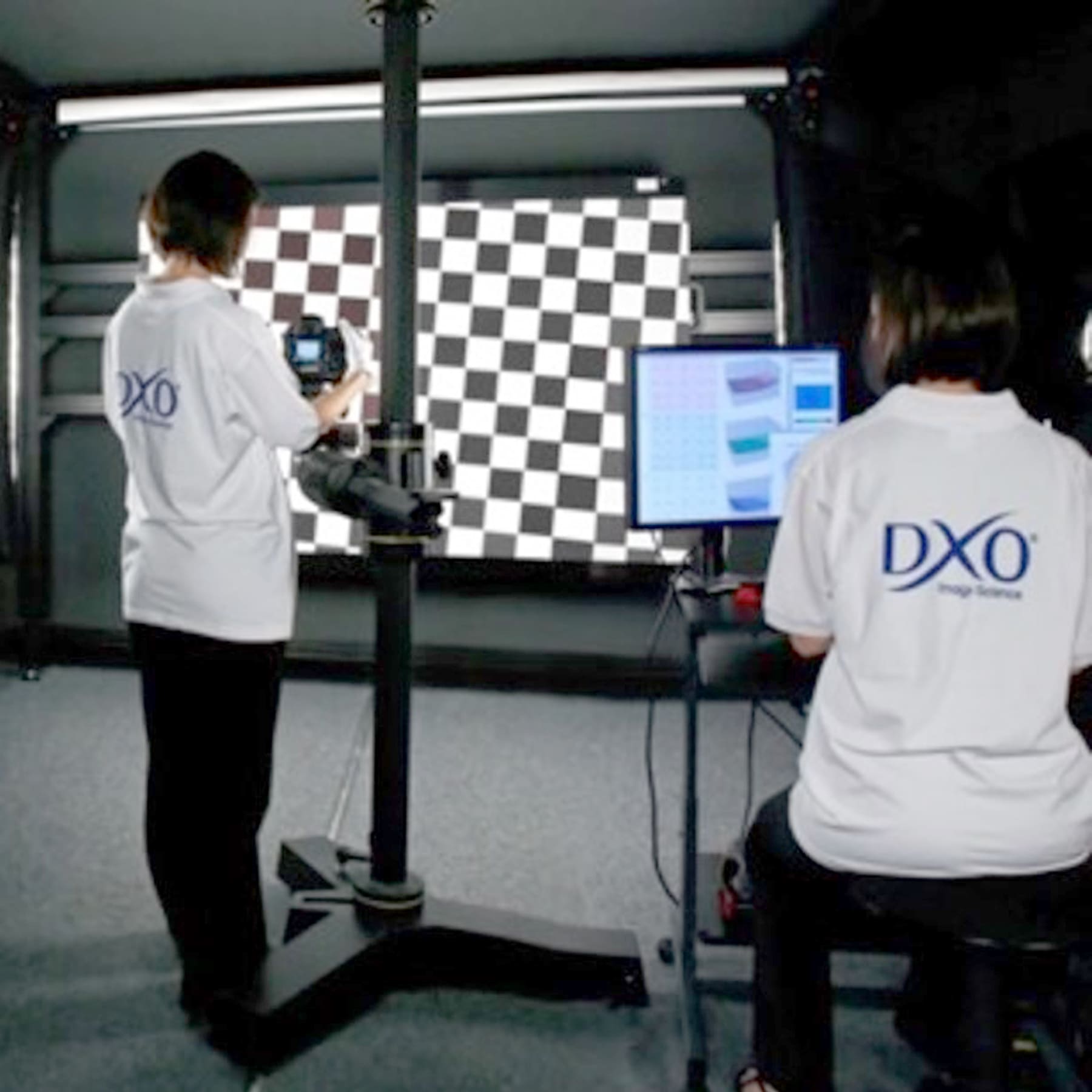
2004
The gamechanger: DxO Analyzer
In December 2003, we launched DxO Analyzer, a revolutionary tool for professionals to assess the image quality of digital cameras. It was an immediate success, and DxO Analyzer was soon adopted by the entire photo industry, including specialized press and independent laboratories. The technology later led us to create DxOMark.
2004
The revolution: DxO Optics Pro
A few months later, we shipped our first consumer product, and started a revolution. DxO Optics Pro was the first and only photo editing software that offered modules designed to correct lens defects found in specific lens/camera combinations. It resolved chromatic aberrations, distortions, vignetting, and even loss of sharpness with laboratory-grade precision.
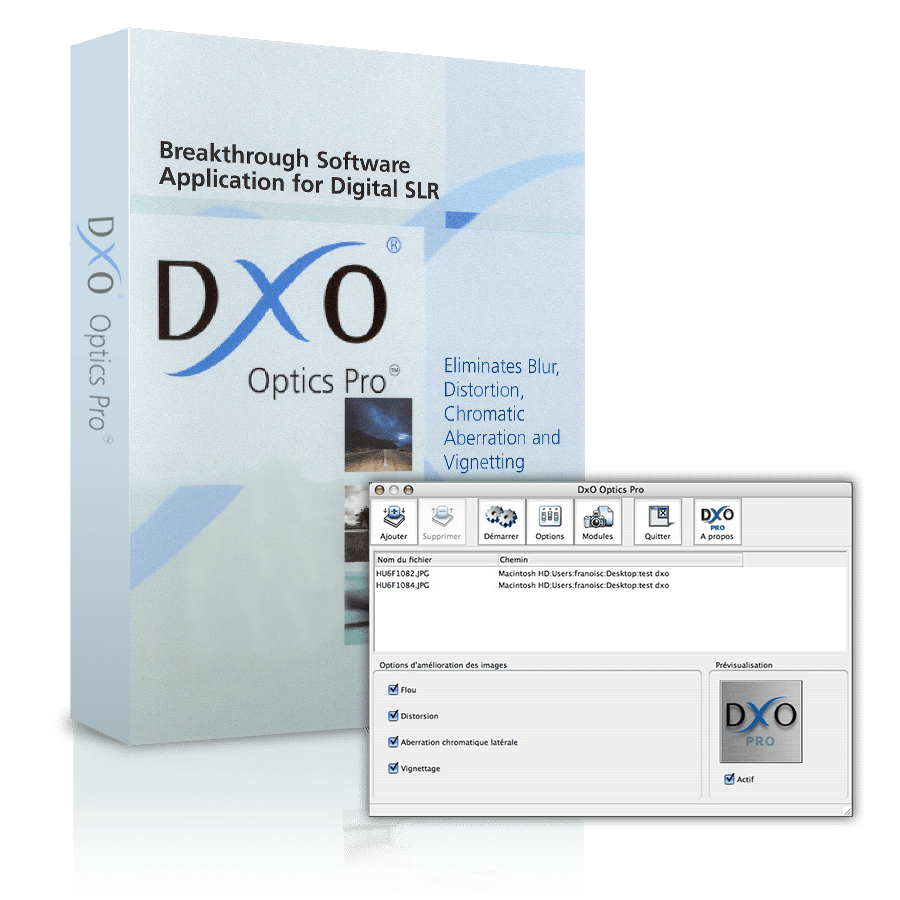
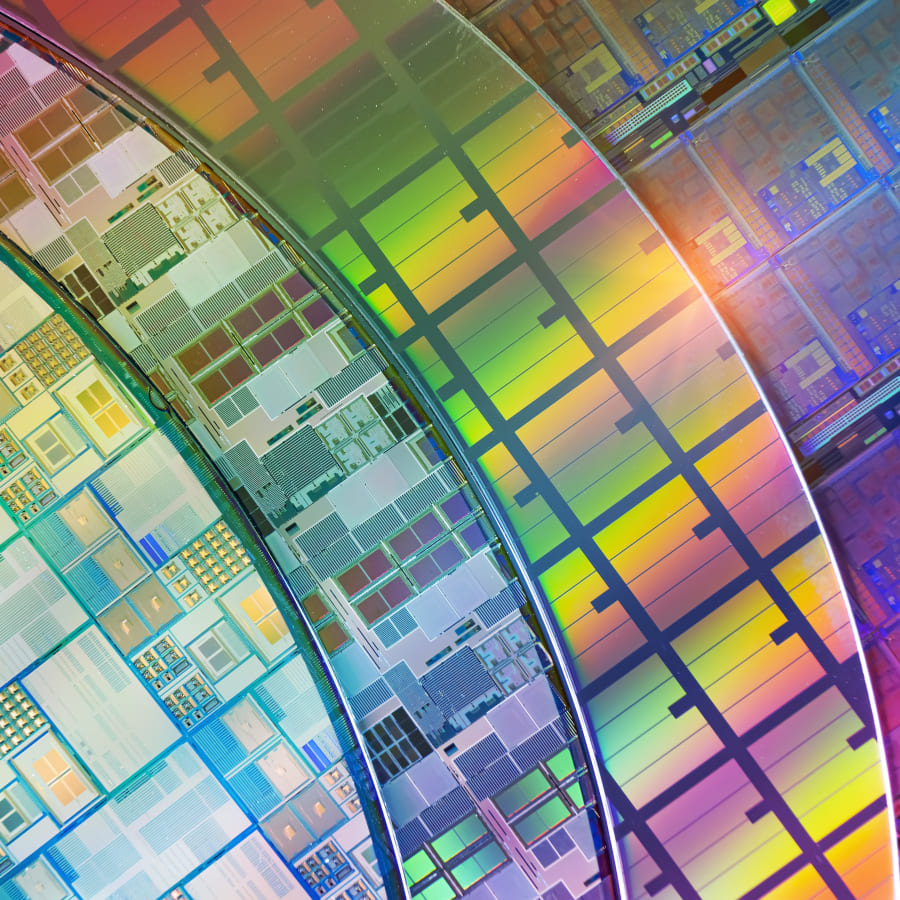
2005
DxO gets on board the mobile imaging rocket...
The early 2000s saw the emergence of the smartphone and as experts in image quality, we could not resist helping mobile manufacturers solve their image quality issues. We filed more than 100 patents, ported our technologies on silicon chips, and ended up powering more than 400 million smartphones worldwide.
2006
... and partners with Carl Zeiss for a high-end digiscope
World-famous optics manufacturer Carl Zeiss trusted us for its Image Signal Processing pipeline when developing a high-end digiscope. The result was the acclaimed DC4 digiscope featuring unrivaled image quality, vivid colors, perfect contrast, along with sharp and noiseless detail.
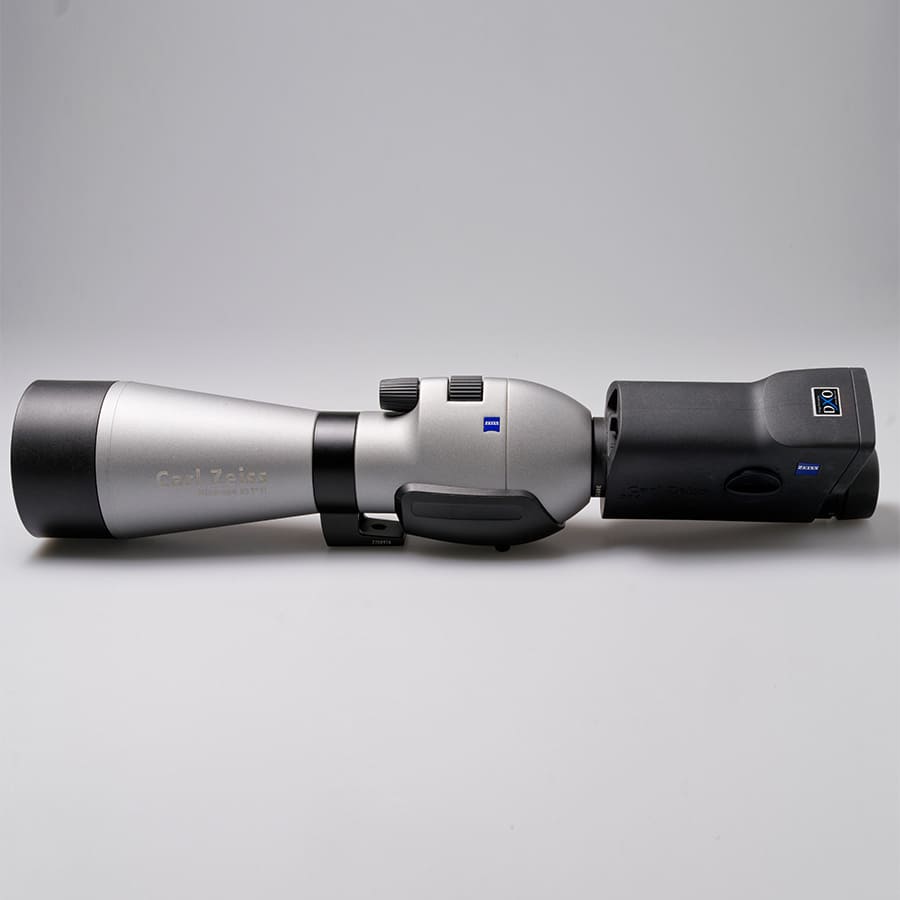

2006
DxO FilmPack: Our tribute to the timeless magic of film
DxO Labs is a child of the new era of digital photography and despite this, we know that we owe our existence to film photography. As passionate photographers, we felt the need to give something back. For this reason, we created DxO FilmPack, an homage to analog image-making, to ensure that the spirit of film photography will never fade.
2008
DxOMark image quality website debuts
With DxO Analyzer, we had accumulated an incredible database of unique image quality data points of all the possible cameras and lenses and we figured out that it could be a super-useful resource for photographers. So we decided to publish it – for free! It was the start of the now world-famous DXOMARK website.
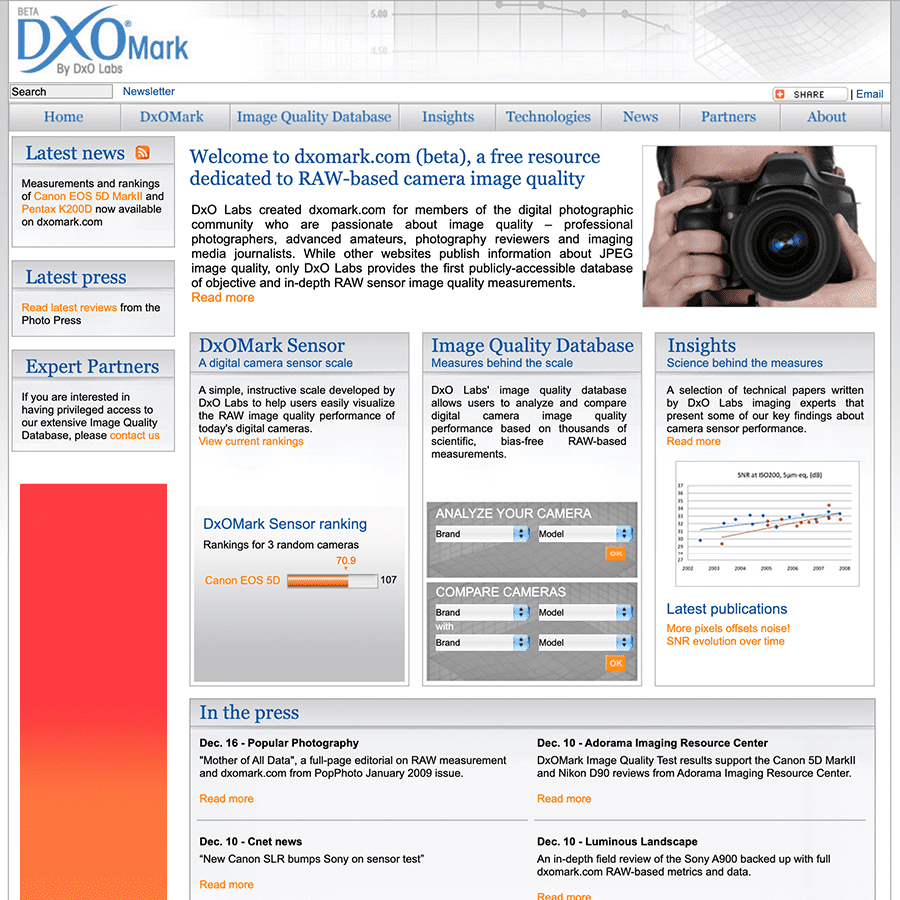

2012
Introducing geometric perfection: DxO ViewPoint
With DxO ViewPoint, we introduced the world’s first algorithm for correcting volume deformation. Also called “anamorphosis,” this phenomenon occurs when objects placed near the edge of a wide-angle lens become distorted. Photographers could finally stop worrying about stretching their subjects!
2015
The DxO ONE camera, the first and only camera of its kind
Did you ever dream that your smartphone had a real, 1”, high-end, CMOS-BSI 20-megapixel sensor? Paired with an incredibly sharp 32mm f/1.8 lens? And a micro-SD card? And …? Well, we did it! It was the DxO ONE, a first-of-its-kind pro camera designed to live in your pocket and connect with your iPhone.


2017
DxO buys Nik Collection from Google
When Google revealed that it would no longer support and develop the beloved Nik Collection suite of plugins that it had acquired a few years previously, the world of photography was distraught. Fortunately, this was not the end: in October, Google announced that it had sold the Nik Collection to DxO, giving us the opportunity to breathe new life into the suite.
2017
DxO Optics Pro becomes DxO PhotoLab
Over the course of 12 years, DxO Optics PRO evolved as a top RAW converter, mastering demosaicing, denoising, contrast, and color management. With an upcoming 12th version that was about to incorporate Nik Collection’s intelligent U-Point™ technology, we felt that DxO Optics Pro had come of age and was ready for a new name – one that reflected its full capacity and ambition. DxO PhotoLab was born.

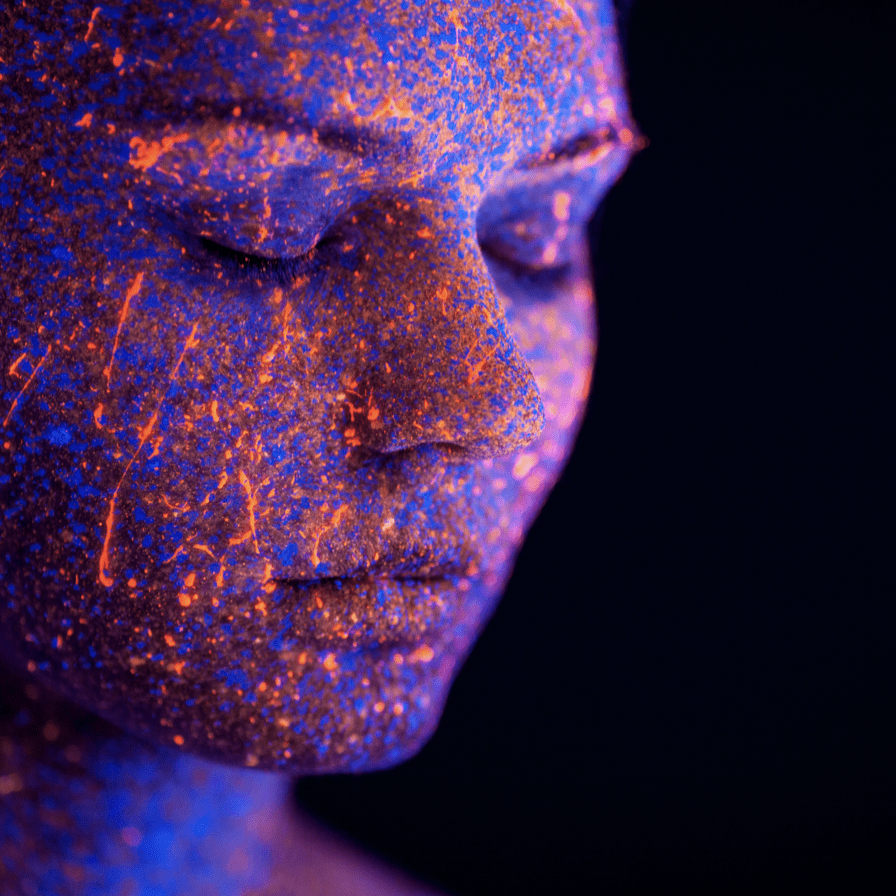
2020
DeepPRIME denoising revolution thanks to deep learning AI
Over the years, our lab produced millions of RAW images as part of its analyses of cameras and lenses; we used this absolutely unique data set to train an AI model specialized in images. Introduced in DxO PhotoLab 4, the results were mind-blowing: DeepPRIME delivered a gain of more than two stops of ISO!
2021
DxO PureRAW: Ultimate image quality for everyone
We brought some of our best technologies to Adobe Photoshop and Lightroom users and launched DxO PureRAW. When used before Adobe software, this incredibly easy-to-use software combined two of the brand's flagship technologies, DeepPRIME and lens defect correction. As a result, lens flaws and limitations on ISO values became a thing of the past.
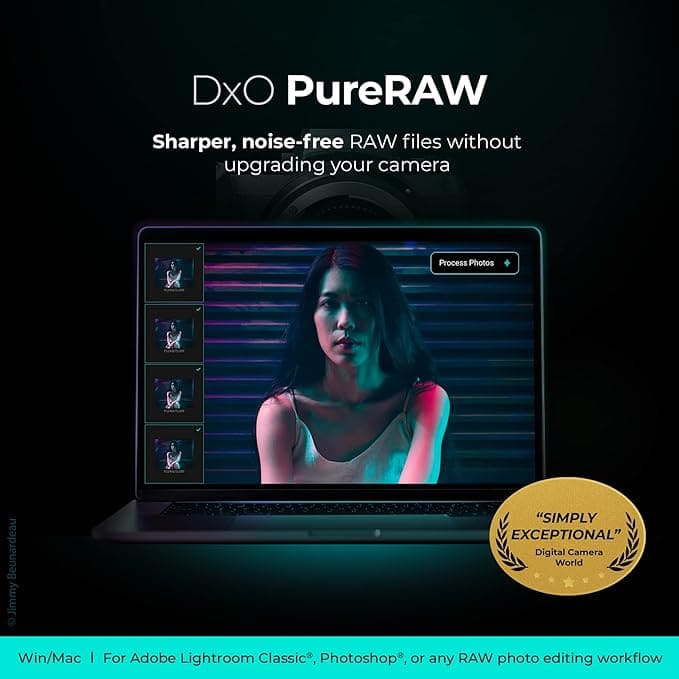
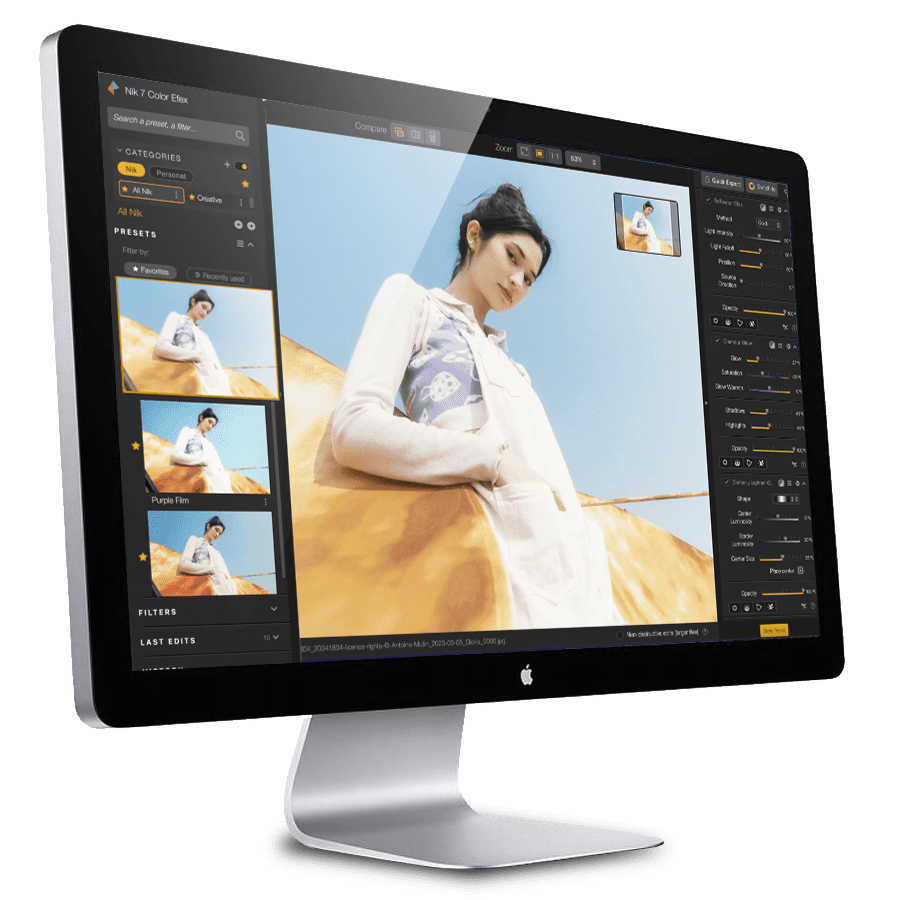
2023
DxO rebuilds Nik Collection from the bottom up
When we bought the Nik Collection from Google in 2017, we faced a major challenge: the talented Nik software development team was gone and we had just acquired millions of lines of source code from as far back as the 1990s, without any documentation. It took us six years to re-code it from the ground up and now the Nik Collection is ready for another 30 years of innovation.
2024
DxO PhotoLab wins a TIPA award for fifth consecutive year
For the ninth time in total, TIPA recognized DxO PhotoLab and dubbed it Best Imaging Software Professional. We've also won six prizes from EISA over the years. All of these awards are judged by panels of seasoned industry professionals. As experts who value quality and control, they know what passionate photographers want!

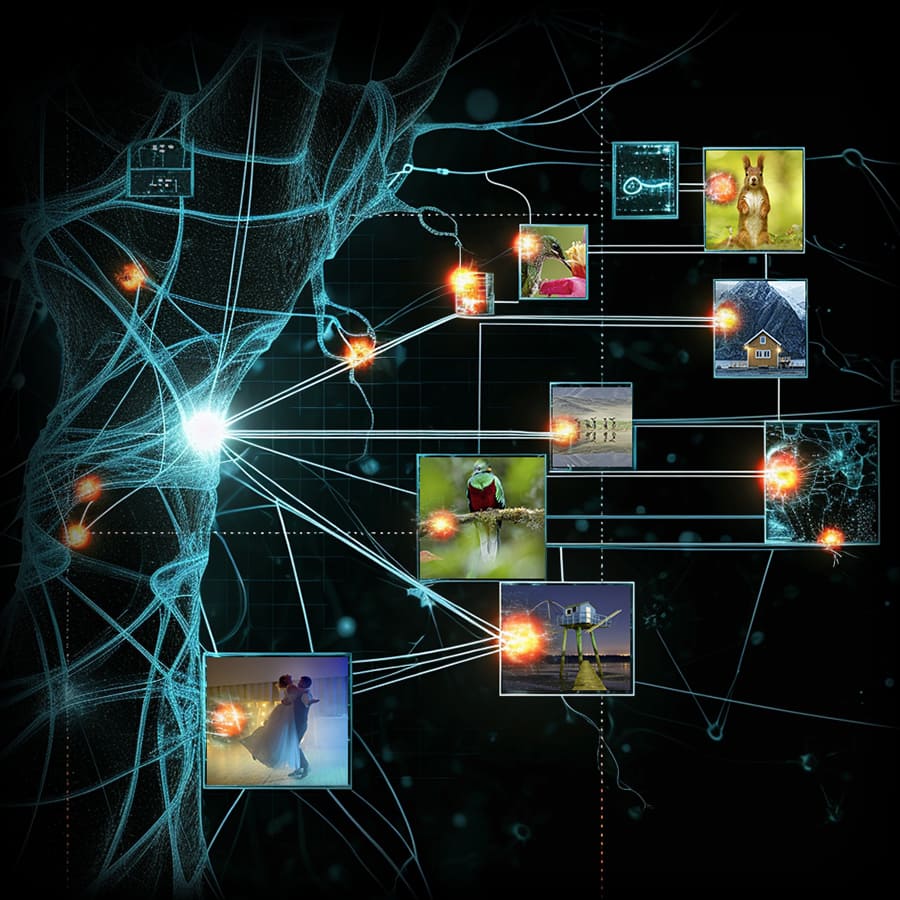
2024
DxO PureRAW sets the new industry standard for denoising
Demosaicing and denoising are the building blocks of any image processing pipeline, and their quality determines the final result's excellence. That's why we keep investing heavily in fundamental research on these topics. With the introduction of DeepPrime XD2 (for "Enhanced Detail"), PureRAW 4 set a new industry standard, becoming the essential first step in any ambitious RAW workflow.
Celebrating our 20th anniversary with a new motto:
"DxO: For the passionate photographer"

DxO Labs was incorporated in March 2003, evolving from a project incubated a few years earlier in Vision-IQ. As a result, we decided to mark our age from the launch of our first consumer product, DxO Optics Pro, in June 2004 (shaving off a few years in the process, which is always a good thing!).
Celebrating our 20th anniversary, we would like to thank you, our photographer friends, whose support has made this journey possible. Our new motto, "DxO: For the passionate photographer," will serve as a North Star for our future roadmap. We are young, agile, and filled with great ideas and talented people. We promise to keep surprising you for the next 20 years!
From Paris, with passion,
The DxO Team
